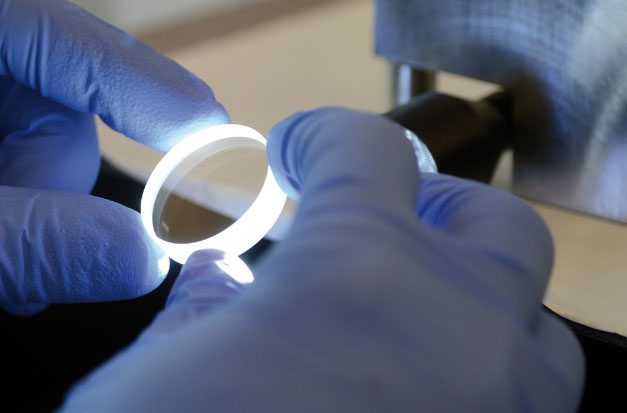The new Glacier-C supercontinuum light source cavity-ringdown reflectometer makes it possible.
Measure the reflectivity of up to 99.9995% of a mirror
Conventional absorption and reflection measurements are not sensitive enough to quantify today’s super-reflective mirror coatings. They are typically limited to <99.9% reflectivity, corresponding to the >1000 ppm range.
A cavity ring-down reflectometer, such as the new Glacier-C from Ultrafast Innovations GmbH, measures optical losses by the decay of the energy stored inside the cavity. This technique ensures unmatched sensitivity because losses are experienced repeatedly, with each round-trip, inside the cavity. Smaller losses lead to longer intra-cavity dwell time. The Glacier system can measure sample losses between 1000 ppm and 5 ppm, corresponding to a reflectivity between 99.9% and 99.9995% for a mirror.
Measure at any wavelength from 450 up to 2000 nm
Up until now, reflectometers were based on diode lasers and would typically offer one, two, or three wavelengths. The wavelengths were limited to whatever wavelengths diode lasers could offer.
The Glacier-C gives you unlimited flexibility when it comes to picking wavelengths. It lets you select any wavelength between 450 and 2000 nm at the click of a mouse. Easy and fast.
But how is that possible? Apart from the cavity ring-down system, the Glacier-C is based on a supercontinuum white-light laser source and a tunable monochromator. The supercontinuum laser, a SuperK COMPACT from NKT Photonics, delivers a broad range of wavelengths, and the NKT Photonics SuperK SELECT tunable filter lets you pick any wavelength within the spectrum.
This gives you exceptionally flexible characterization capabilities. With a single – very versatile and powerful – device, you can characterize mirrors and coatings at exotic wavelengths.

For companies and scientists
The Glacier-C makes it easier and faster for scientists and coating facilities to develop and characterize coatings, coating processes, mirror designs, highly reflective coatings, and low-loss anti-reflective coatings.




